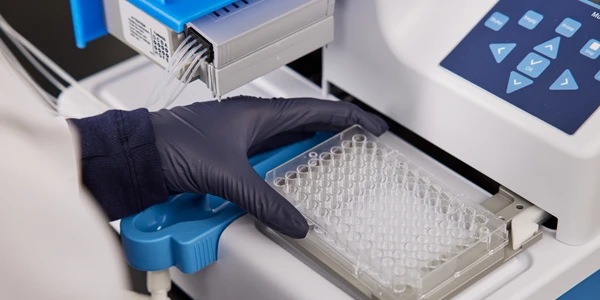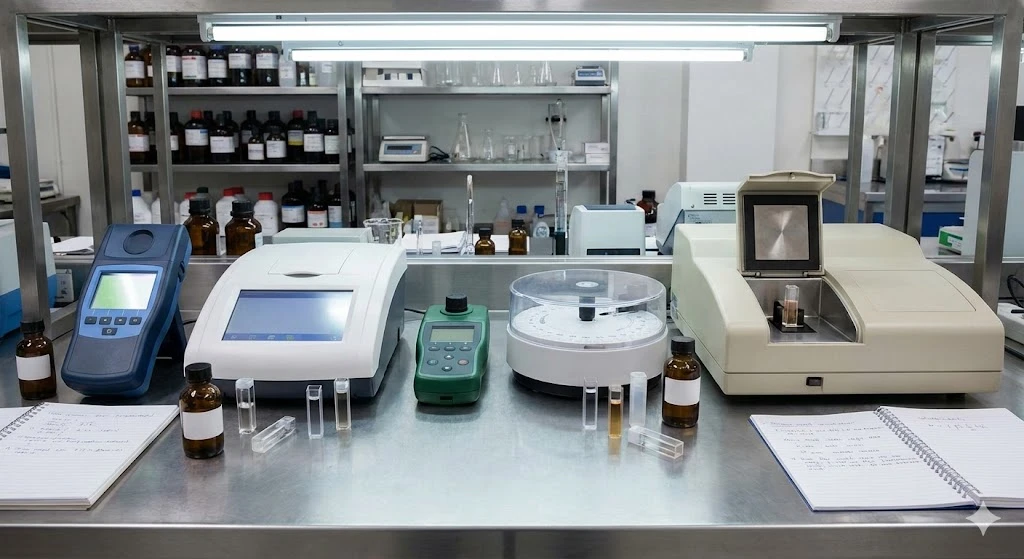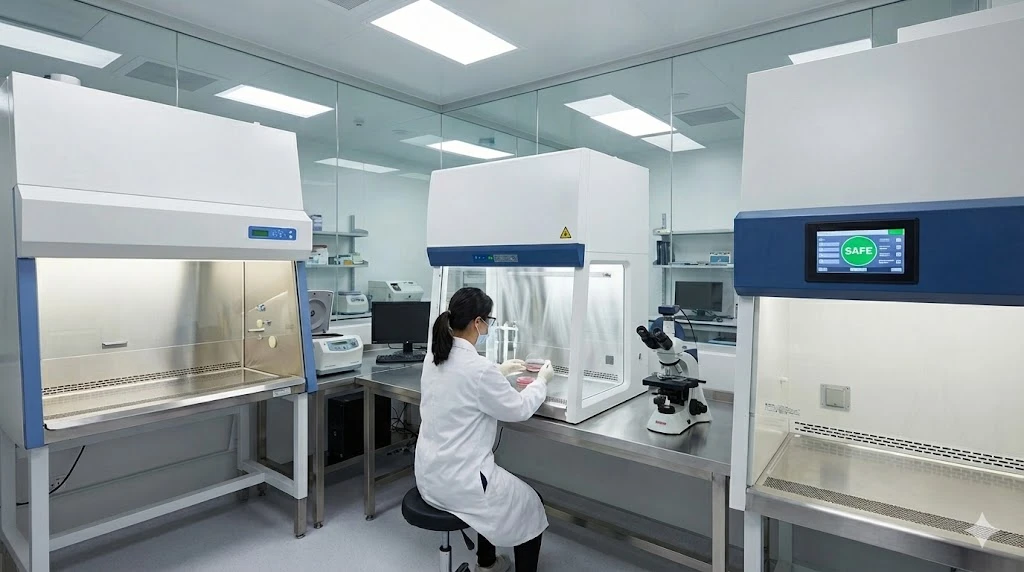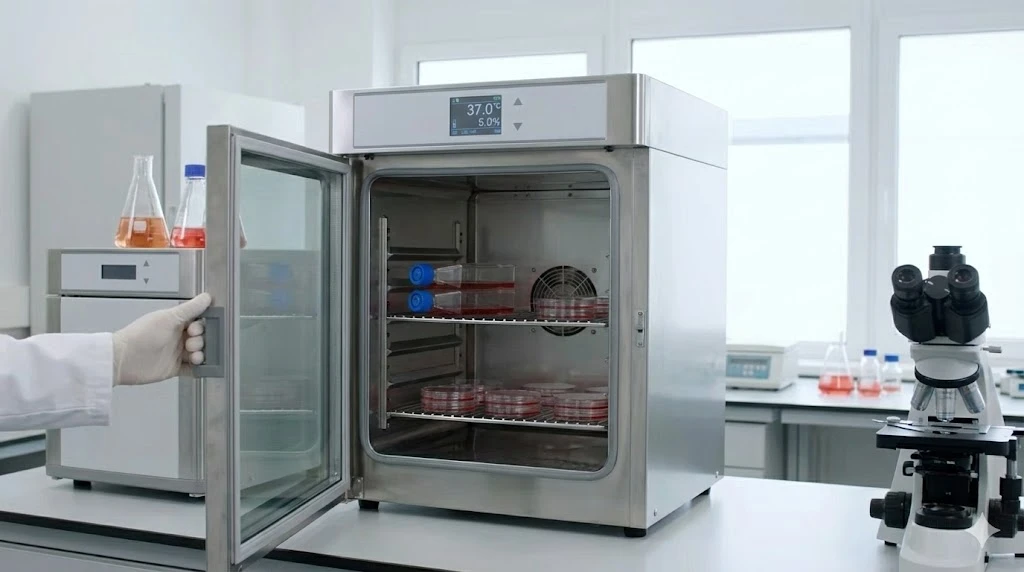Safety Guidelines for Working with Gamma-Emitting Isotopes
GEMINI (2025) The handling of radioactive materials is a critical responsibility in modern scientific and medical laboratories. The use of gamma-emitting isotopes, such as Iodine-125, Cesium-137, and Cobalt-60, provides invaluable diagnostic and research capability, yet requires stringent radiation safety protocols to mitigate the deep tissue penetration hazard posed by gamma radiation. Adherence to established safety guidelines is paramount, ensuring personnel protection, regulatory compliance, and the integrity of experimental results when working with these powerful sources. The foundational principles of radiation safety are time, distance, and shielding. These concepts form the basis for all practical applications involving gamma-emitting isotopes and are crucial for minimizing occupational exposure. Time: The total dose received by personnel is directly proportional to the duration of exposure. Work procedures involving gamma-emitting isotopes must be streamlined and meticulously rehearsed to reduce handling time. This includes pre-staging materials, performing dry runs of experiments, and optimizing the geometry of the workspace to ensure rapid completion of tasks. All efforts should focus on minimizing the time spent in close proximity to the unshielded source. Distance: Radiation intensity decreases sharply with distance, following the inverse square law. Doubling the distance from a point source reduces the dose rate to one-fourth. This principle necessitates the use of handling tools, remote manipulators, and long tongs whenever possible. When designing a laboratory space where gamma-emitting isotopes are routinely handled, bench space should be maximized to keep storage areas and processing areas as far from occupied zones as feasible. Shielding: Gamma rays are highly penetrating and require dense, high-atomic-number materials for effective attenuation. Lead is the material of choice for gamma-emitting isotopes due to its density and practical affordability. The thickness of lead shielding required is determined by the radionuclide's energy and the required dose reduction factor. Shielding must be comprehensive, addressing not only the primary source container but also any equipment, such as scintillation counters, that contain the materials. For low-energy gamma sources, high-density materials other than lead, like tungsten or specialized lead-free alloys, may also be considered to maintain effective radiation safety. Effective radiation safety for gamma-emitting isotopes relies heavily on robust engineering controls, primarily in the form of specialized shielding. Shielding is categorized into primary and secondary controls based on its location and purpose. Primary Shielding involves barriers immediately surrounding the source material. Isotope Example Primary Shielding Material Application Cobalt-60 Thick Lead or Concrete Radiography sources, large irradiators Cesium-137 Lead bricks or Lead-lined Casks Instrument calibration, large source storage Iodine-125 Lead foils/Glass or Specialized Containers Radioimmunoassay, low-energy gamma sources Secondary Shielding refers to structural barriers, such as walls, floors, and fixed enclosures, designed to protect personnel in adjacent areas and prevent scatter radiation from leaving the controlled zone. In facilities where high-activity gamma-emitting isotopes are manipulated, concrete, steel, or high-density composite materials are often used for wall construction. The integrity of both primary and secondary shielding must be periodically verified through rigorous safety audits and radiation surveys. It is critical that penetrations (e.g., conduits, ventilation ducts) through secondary barriers are properly sealed with shielded plugs to prevent streaming paths for the radiation. Furthermore, specialized fume hoods are often equipped with lead-shielded walls and floors to handle volatile or dispersible forms of gamma-emitting isotopes safely. This dual-layer approach to safety is indispensable for operations involving substantial radiation fields. A rigorous personnel monitoring program is a non-negotiable component of radiation safety when working with gamma-emitting isotopes. Monitoring ensures that individual occupational dose limits are not exceeded and provides necessary data for long-term health surveillance. Personnel Dosimetry
All individuals who may receive an annual dose exceeding a specified regulatory threshold must be issued a personal dosimeter. Types of Dosimeters: Thermoluminescent Dosimeters (TLDs) and Optically Stimulated Luminescence Dosimeters (OSLDs) are the most common devices. These devices measure whole-body dose (Deep Dose Equivalent) and shallow dose. Wearing Requirements: Dosimeters must be worn consistently during all work with gamma-emitting isotopes, typically on the trunk of the body between the neck and waist. If a significant dose is expected to the extremities (hands or forearms), separate ring dosimeters must be used. Exchange and Analysis: Dosimeters are collected and processed on a scheduled basis (usually monthly or quarterly) by an accredited processor. The results are logged and reviewed by the Radiation Safety Officer (RSO) to identify and investigate any unexpected exposure trends. Bioassay Programs
For certain gamma-emitting isotopes that have a potential for internal uptake (e.g., via ingestion, inhalation, or skin absorption), a bioassay program may be required. This program involves analyzing biological samples (urine, fecal matter, or even whole-body counting) to assess the internal contamination level. The results from the bioassay are used to calculate the Committed Effective Dose Equivalent (CEDE) and ensure that internal doses remain within safety limits, providing an essential layer of protection against the often more damaging effects of internal exposure. Administrative controls represent the human and procedural element of radiation safety, complementing the physical engineering controls. These protocols define how work with gamma-emitting isotopes is conducted safely and lawfully. Standard Operating Procedures (SOPs): Every unique experimental process or routine task involving radioactive material must be documented in a detailed SOP. These documents must specify the required shielding, dosimetry, handling tools, waste disposal methodology, and emergency response steps. SOPs serve as the primary training and reference material for all laboratory personnel. Training and Authorization: All personnel must complete mandatory, documented training on radiation safety principles, regulatory requirements, and the specific hazards associated with the gamma-emitting isotopes used in their facility. Furthermore, access to controlled areas and the authorization to handle specific radionuclides must be granted only by the RSO or an equivalent authority. Regular refresher training is essential to maintain a high level of safety awareness. Area Control and Posting: Areas where gamma-emitting isotopes are stored or used must be clearly demarcated and posted with appropriate warning signs, including the "Trefoil" symbol, information regarding the primary radionuclides present, and emergency contact details. Access to these controlled areas must be strictly limited to authorized and monitored personnel. Physical security, such as locked storage cabinets, is required to prevent unauthorized access or theft of the material, a crucial aspect of overall safety and compliance. Inventory and Accountability: Strict accountability measures, including comprehensive records of receipt, transfer, use, and disposal of all radioactive materials, are necessary. Detailed inventory logs ensure the precise location and amount of every gamma-emitting isotope can be determined at any time, which is critical for safety and regulatory audits. Despite stringent controls, the potential for an accidental release or spill of gamma-emitting isotopes necessitates clear, well-rehearsed emergency response protocols. A rapid and coordinated response minimizes the risk of internal contamination and external exposure. Spill Response Plan: Every laboratory should have a written and accessible spill response plan detailing immediate actions. These plans should align with internationally recognized standards such as the IAEA Safety Standards GSR Part 3 or the NRC Regulatory Guide 8.23. The priority is to limit the spread of contamination and prevent personnel exposure. Immediate Action: Isolate the area, immediately notify co-workers and the RSO, and contain the spill using absorbent materials (e.g., spill pads or paper towels) if it can be done without increasing personal risk. Personnel Monitoring: All potentially exposed personnel must be monitored for contamination immediately after the incident. Clothing must be removed and stored for safety assessment, and exposed skin surfaces should be carefully decontaminated following approved procedures. Decontamination Kit: A designated, easily accessible spill kit must be maintained and regularly checked. A typical kit includes absorbent materials, clear plastic bags for waste, radiation-specific cleaning agents, disposable protective clothing (gloves, shoe covers, lab coat), masking tape, and necessary signage to rope off the area. Reporting and Investigation: All incidents, regardless of magnitude, must be thoroughly investigated by the RSO. The investigation aims to determine the root cause, quantify the actual or potential exposure, and revise administrative controls and SOPs to prevent recurrence. This investigative process is fundamental to continuous improvement in radiation safety. Proper disposal of all contaminated waste must be managed according to specific regulatory guidelines for radioactive waste. Effective radiation safety is not merely a checklist of controls; it is a fundamental institutional commitment to protecting personnel and the environment. Working with gamma-emitting isotopes requires constant vigilance, robust training, and meticulous documentation. By adhering to the principles of time, distance, and shielding, implementing comprehensive engineering and administrative controls, and maintaining proficiency in emergency protocols, laboratories ensure the responsible and safe utilization of these essential tools. Upholding these safety guidelines protects individuals from the unique penetrating hazards of gamma-emitting isotopes and secures the facility's compliance standing. What is the maximum allowed exposure dose when working with gamma-emitting isotopes? Regulatory limits vary globally, but in the United States, the occupational limit for the whole body (Total Effective Dose Equivalent or TEDE) is typically 5 rem (50 mSv) per year. Laboratories must strive to keep doses As Low As Reasonably Achievable (ALARA), far below this maximum safety limit. What is the most effective shielding material against high-energy gamma-emitting isotopes? Lead is the most widely used and practical material for shielding medium to high-energy gamma-emitting isotopes due to its high density and atomic number (Z). For very high-energy applications, concrete or high-density alloys may also be used in bulk structural shielding. How often must personnel dosimeters be processed for safety monitoring? The frequency for processing personnel dosimeters (like OSLDs or TLDs) is determined by regulatory requirements and the potential exposure levels. It is typically performed on a monthly or quarterly basis to ensure timely detection and investigation of any unexpected exposure from gamma-emitting isotopes. Why are low-energy gamma-emitting isotopes sometimes considered higher risk for internal contamination safety? While low-energy gamma-emitting isotopes (like I-125) are easier to shield externally, they often pose a higher risk of internal contamination. If inhaled or ingested, they concentrate in organs and deliver a high localized dose, making bioassay programs crucial for overall safety. This article was created with the assistance of Generative AI and has undergone editorial review before publishing.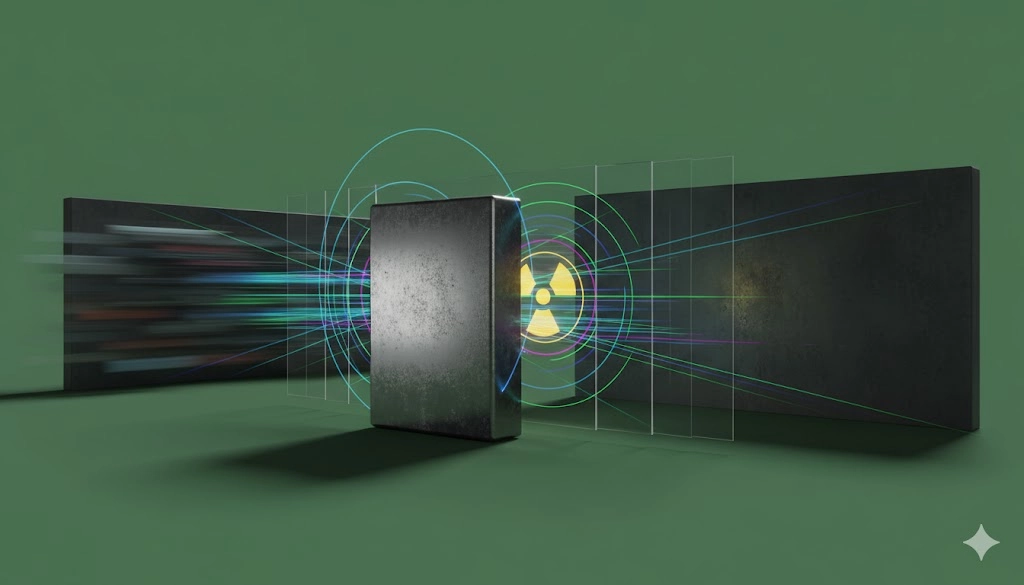
Minimizing Exposure: Time, Distance, and Shielding for Gamma-Emitting Isotopes
Implementing Primary and Secondary Shielding Controls for Isotope Safety
Monitoring Dose: Mandatory Personnel Dosimetry and Bioassay Requirements
Administrative Safety Protocols and Standard Operating Procedures (SOPs)
Comprehensive Emergency Response for Isotope Spills and Decontamination
Maintaining a Culture of Excellence in Radiation Safety
Frequently Asked Questions (FAQ)
